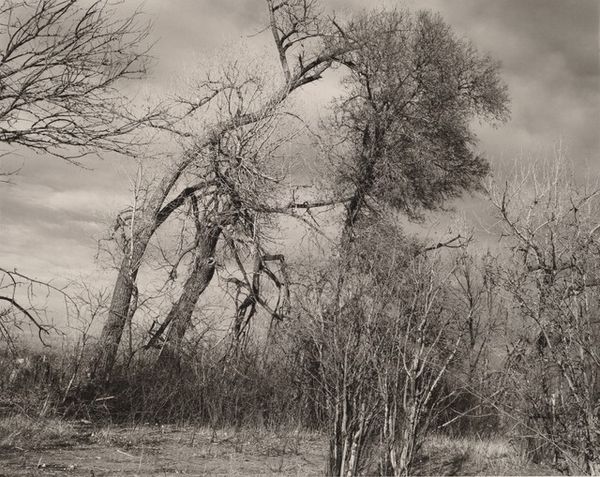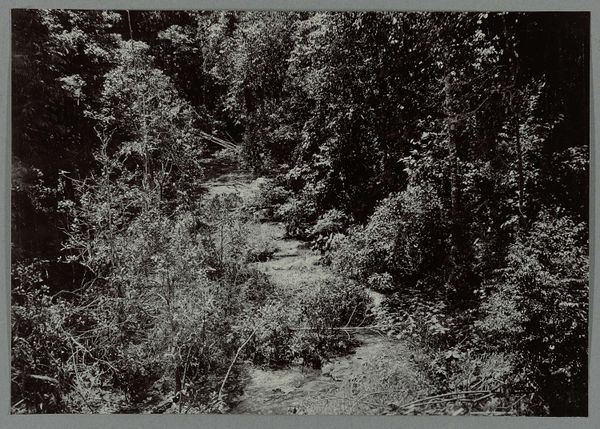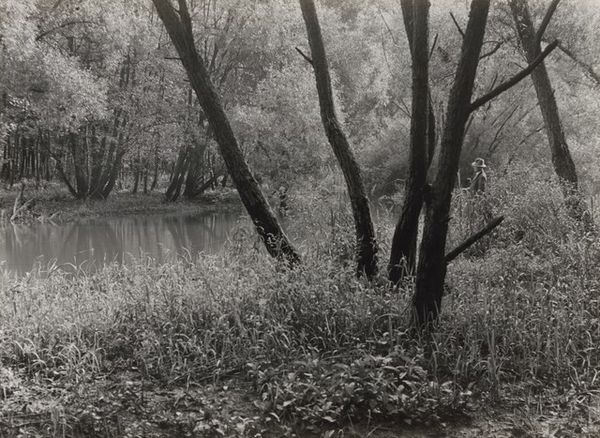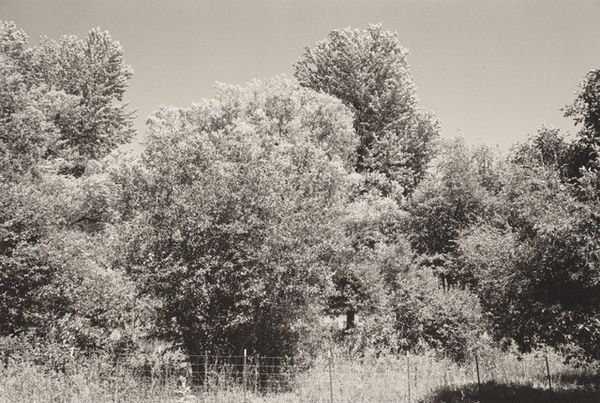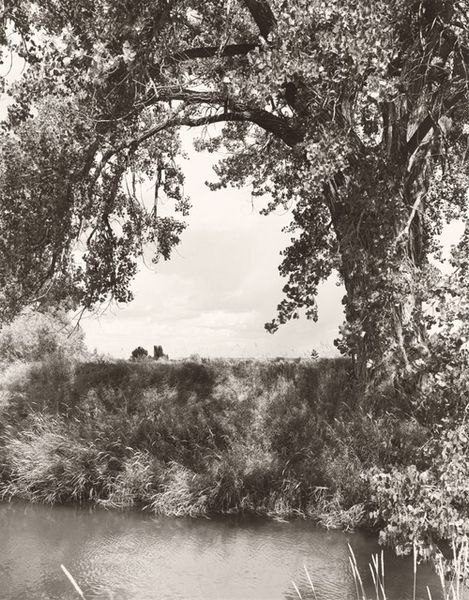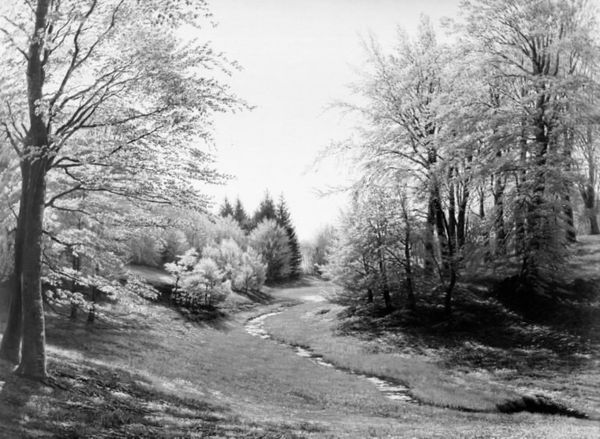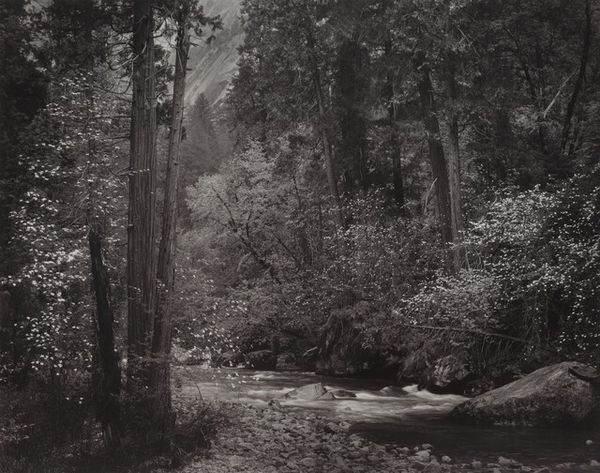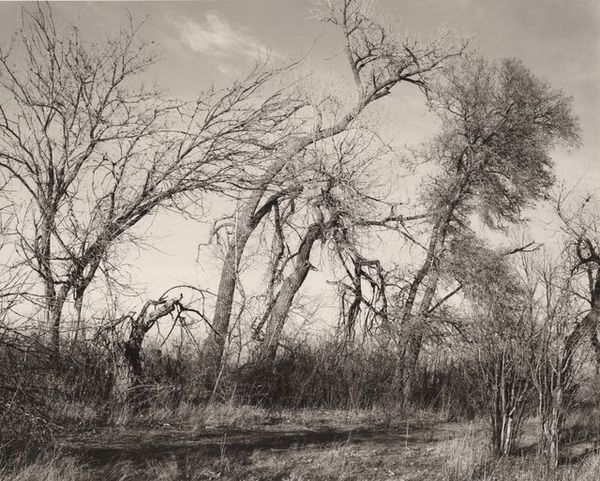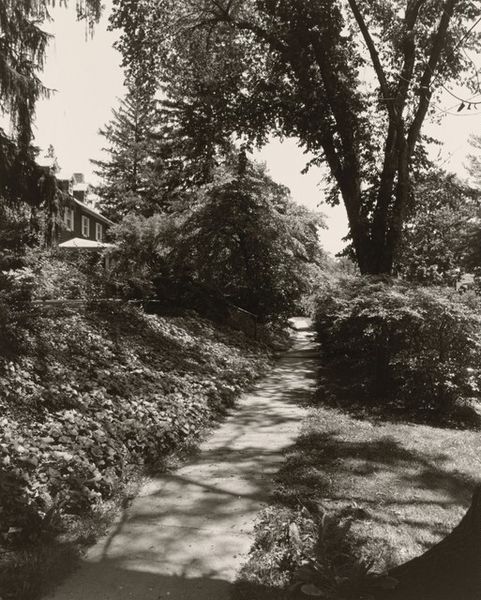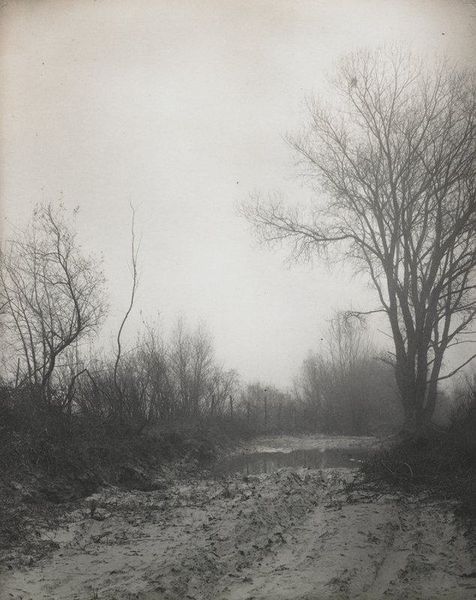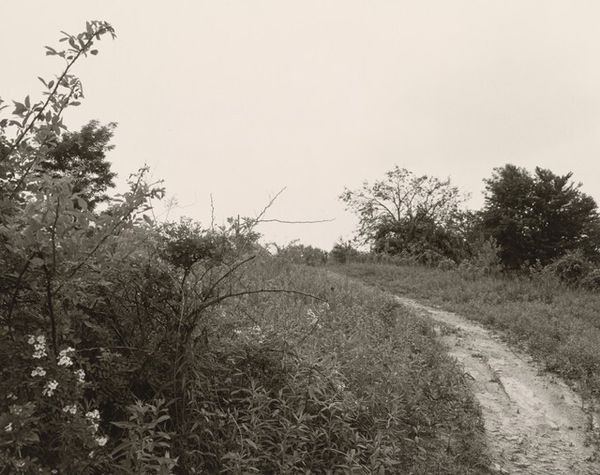![Untitled [trees and stream] by James Bartlett Rich](/_next/image?url=https%3A%2F%2Fd2w8kbdekdi1gv.cloudfront.net%2FeyJidWNrZXQiOiAiYXJ0ZXJhLWltYWdlcy1idWNrZXQiLCAia2V5IjogImFydHdvcmtzL2E1ZTMxYTYyLTE2MTgtNDc5Ny1iYjA0LTdhMTdhZjg5ODY0ZC9hNWUzMWE2Mi0xNjE4LTQ3OTctYmIwNC03YTE3YWY4OTg2NGRfZnVsbC5qcGciLCAiZWRpdHMiOiB7InJlc2l6ZSI6IHsid2lkdGgiOiAxOTIwLCAiaGVpZ2h0IjogMTkyMCwgImZpdCI6ICJpbnNpZGUifX19&w=1920&q=75)
Dimensions: 8 1/8 x 6 1/8 in. (20.64 x 15.56 cm) (image)8 3/8 x 6 3/8 in. (21.27 x 16.19 cm) (sheet)
Copyright: No Copyright - United States
Editor: We’re looking at “Untitled [trees and stream]”, a gelatin-silver print by James Bartlett Rich, likely from around the 20th century. It has this lovely, muted quality, almost like a memory fading into sepia tones. What cultural context am I missing in this image? Curator: Well, it's tempting to see this as simply a pastoral scene, disconnected from broader social forces, but let's push beyond that. Think about the rise of photography as an accessible art form in the early 20th century, and its democratizing potential. Editor: How so? Curator: Prior to photography, landscape painting was often associated with wealth and patronage. The act of commissioning landscape paintings often reflected political power or land ownership. Photography offered a different avenue. While landscape painting demanded significant technical skill and artistic training, which was frequently inaccessible to certain populations, photography empowered individuals from different socioeconomic backgrounds to document and interpret their surroundings. Did Rich's family background play a role, perhaps? Editor: Good question. I'm not certain. I can check our files, but the point is, photographers like Rich had to position their work within established aesthetic traditions like landscape painting. And then galleries had to choose who got exhibited, didn’t they? Curator: Exactly. Institutions play a pivotal role in shaping artistic legitimacy and access to imagery, don't they? Think about which images of nature got circulated and celebrated at that time, and how they may have reinforced certain ideas about the land, nationhood, even progress. Rich, with his almost Impressionistic treatment, could be both emulating and gently critiquing that pictorial tradition. Editor: I hadn’t considered the role of galleries in shaping this ‘photographic tradition.’ I initially saw it as just a pretty picture, but now, I see it’s so much more than that. Curator: Precisely. We need to see it in dialogue with its own time and the forces that were shaping American visual culture.
Comments
No comments
Be the first to comment and join the conversation on the ultimate creative platform.

